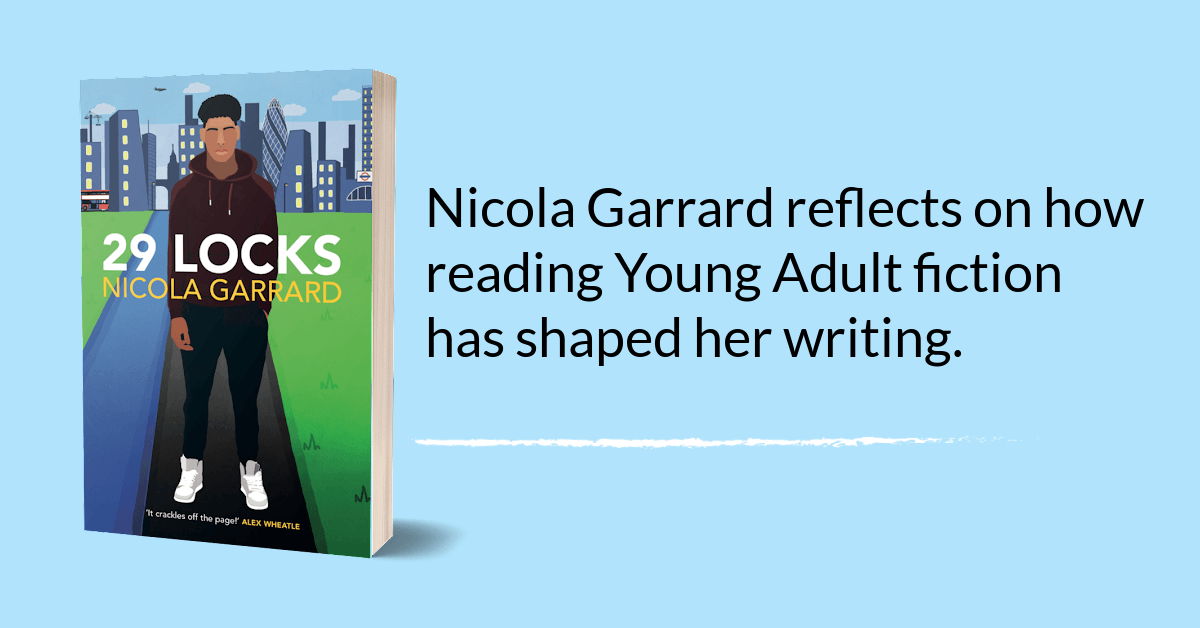
Young Adult fiction is an oddity, a jumble of genres sitting awkwardly on the same shelf. From fantasy to historical, scifi to commercial fiction, LGBT+ romance to gritty social realism (and more), it’s nominally written for 13 to 18 year olds, with a small number of titles qualifying as ‘crossover’; that is, appealing to both adult and teenage readers. But studies indicate that over half of YA readers are adults, with women making up the majority of readers.
And why not? With its protagonists undergoing the challenges and frustrations of the adult world for the first time, and emotions running high as they work out their place, define their identity and rapidly develop agency, Young Adult fiction often delivers a rollercoaster of a read.
Over the years, I’ve admired Young Adult writers such as David Almond and Anthony McGowan, who have carved out a literary space within YA with lyricism, beauty and precision in language that readers might expect from adult literary fiction. I also admire those writers who use the Young Adult form for political and social commentary, with a relevance and sense of urgency that nurtures young people’s emerging thirst for an understanding of history, power structures and identity; novels like Alex Wheatle’s Cane Warriors, which makes a powerful emotional case for post-colonial reparations, Elizabeth Laird’s A Home Without Walls, which celebrates the strength of a young Syrian refugee whose life has been plunged into turmoil, and Jenny Downham’s Furious Thing, about the insidiousness of coercive domestic abuse.
As an English teacher, I read the Young Adult prize longlists each year, such as the Carnegie and the UKLA award, and enjoy discussing the novels with students, teachers and librarians. These prizes help those working in schools and libraries make recommendations to students and choose texts for ‘class readers’, but on a personal level, they’ve given me a glimpse into the very best of YA and its potential to touch lives and foster empathy in young people.
Shadowing these longlists each year, I read around 20 to 25 Young Adult novels, but I’d never thought of writing a novel myself until a tragedy happened to a young person I knew. Many students I’d taught over the years in London were affected by violent gangs and postcode battles, but when one of my favourite students was murdered, I was heartbroken. Writing felt like the only thing I could do and the resulting story, 29 Locks, is brimming with anger and grief, but also love and admiration for the courage and resilience of poverty- and gang-affected young people whose voices are rarely heard.
As I wrote 29 Locks, I thought about novels set in cities which dealt frankly with racism, crime and poverty: Angie Thomas’s The Hate U Give, Jason Reynolds' Long Way Down, Patrice Lawrence’s Orange Boy, Stephen Kelman’s Pigeon English, Alex Wheatle’s Brixton Rock. These writers bring the contemporary struggles of many young people’s lives into print and are a world away from the fiction available in the school library when I was a teenager: Choose Your Own Adventure fantasy series, Carrie’s War, The Railway Children, Wuthering Heights, Swallows and Amazons. The world of this fiction is white, colonial, rural and nostalgic, with the odd decision to make about fighting a dragon or picking up a goblet.
Today, there is an impressive range of fiction and poetry for young people, with new children’s publishers being set up in recent years to meet the demand for diverse books that reflect the experiences of young people. It’s a great time to be reading and writing Young Adult fiction. Next time you’re looking for a new read, regardless of your age, consider picking up YA.
Nicola Garrard
October 2021